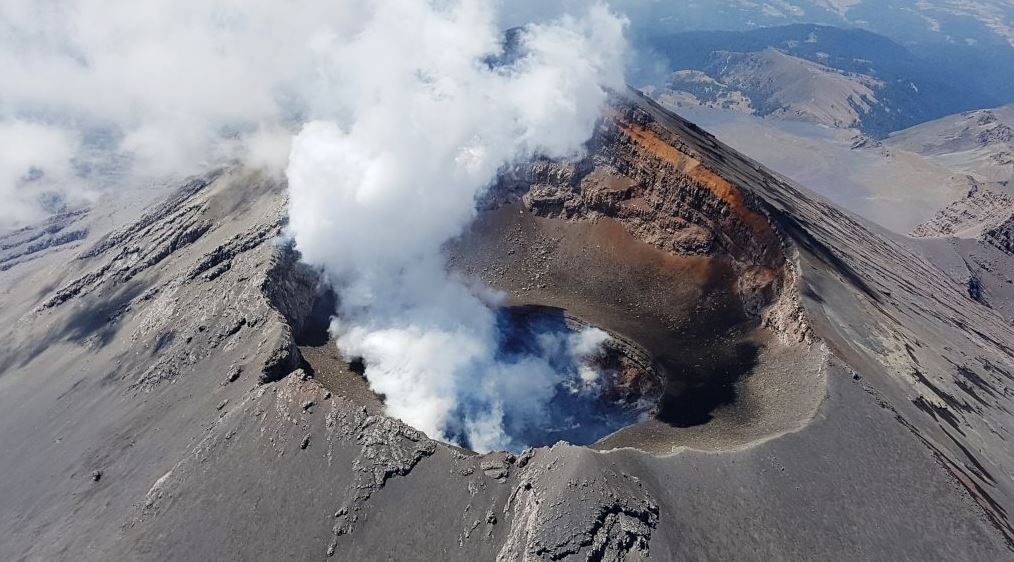
In the past 24 hours, the Popocatepetl volcano recorded 45 exhalations, according to monitoring by the National Center for Disaster Prevention (Cenapred).
Thefederal authorities called on the population to ignore rumors and to be attentive to information issued by the National Civil Protection Coordination through its official channels and accounts: www.gob.mx/cenapred and @CNPC_MX on Twitter.
Cenapred also has the following telephone numbers for citizens to report emergencies associated with volcanic activity: 800-713-4147 and 911.
Popocatepetl is one of the most active volcanoes in Mexico and is located on the territorial boundaries of the entities of Morelos, Puebla and the State of Mexico.
It is 72 kilometers southeast of Mexico City, 43 kilometers from Puebla, 63 kilometers from Cuernavaca and 53 kilometers from Tlaxcala. And it has an altitude of 5,500 meters above sea level.
“Don Goyo” — as they also call it — is still active and, according to scientists at the University of Manchester, it is the fifth volcano at risk of erupting in the coming years.

In the country there are at least 46 active volcanoes, but only six are declared high risk by Cenapred, so it monitors its activity to react in a timely manner in the event of an emergency or major eruption.
The most dangerous volcanoes are: the Popocatepetl; the Fuego Volcano, in Colima; the Ceboruco, in Nayarit; the Pico de Orizaba, on the border of Veracruz and Puebla; the Chichón, in Chiapas and the Tacana, which is on the border with Guatemala.
In the event of a larger Popocatepetl explosion, it would not trigger a chain detonation because each volcano is independent, each has its own conduits, its own magma sources, which are not directly related, so that the activity of a volcano will not affect either up or down the activity of other volcanoes.
Cenapred Volcanic Alert Traffic Light
is the body responsible for constantly monitoring the activity of the country's volcanoes, determining the levels of dangerousness and in this way it can issue preventive safety measures.
In the case of Amarillo Phase 2, this means that there is an increase in activity with the presence of steam and gas plumes, ash fall, incandescent fragments, creation and destruction of lava domes, pyroclastic flows and short-range sludge and debris flows. The other two phases have the following characteristics:
Green
In this phase there is little or no activity that only has on the recommendation of the Commission that villagers be kept informed about evacuation routes, assembly points and temporary shelters. In its first phase, the volcano is considered to be calm and in the second phase it is considered to have minimal manifestations or spontaneous seismic activity.
Red A Red
Volcanic Alert is not only a warning signal, it is also a sign that the authorities and the population must begin to evacuate areas that may be affected in the event of an explosion of the colossus. In its first phase, it is considered that there is an intermediate to high hazard that presents eruptive columns of several kilometers, as well as significant ash fall and pyroclastic and mud flows in nearby areas.
Últimas Noticias
Debanhi Escobar: they secured the motel where she was found lifeless in a cistern

The oldest person in the world died at the age of 119

Macabre find in CDMX: they left a body bagged and tied in a taxi
The eagles of America will face Manchester City in a duel of legends. Here are the details

Why is it good to bring dogs out to know the world when they are puppies




